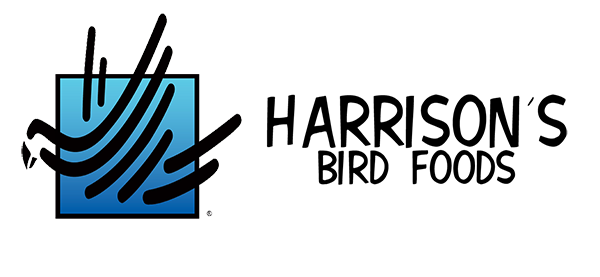The Hatching of Harrison’s Bird Foods
 In a small town in rural America, Greg Harrison launched his career in veterinary medicine. Born and raised in rural Iowa, Harrison had always nurtured a fascination with animals. His path led him to Iowa State University, where he pursued his dreams of becoming a Doctor of Veterinary Medicine (DVM). After graduating, he set up his own small animal practice, eventually leading him to Florida’s sunny shores in 1969.
In a small town in rural America, Greg Harrison launched his career in veterinary medicine. Born and raised in rural Iowa, Harrison had always nurtured a fascination with animals. His path led him to Iowa State University, where he pursued his dreams of becoming a Doctor of Veterinary Medicine (DVM). After graduating, he set up his own small animal practice, eventually leading him to Florida’s sunny shores in 1969.
Relocating his practice across the country, his own wings expanded. There, amidst a wide array of species, Harrison had the chance to work with magnificent creatures at Lion Country Safari in West Palm Beach. His work took flight, and there he discovered that his true passion was for pet bird species. The year was 1973 when fate intervened, presenting Harrison with a unique opportunity to embark on a remarkable journey.
This twist of fate launched a different plan for Harrison when a devastating chlamydiosis outbreak struck a large aviculture-pet shop facility. Harrison’s expertise was urgently sought to resolve this crisis. Little did he know that this pivotal moment would shape the course of his life and ignite his unwavering dedication to pet bird species.
At that time, the United States was witnessing a substantial influx of pet birds from all corners of the globe–birds like Cockatiels, Lovebirds, Caiques, Senegals, Mini-macaws, Conures, Lories Parakeets, Mynas, and even doves and pigeons were imported.
 However, something troubled Harrison deeply. He noticed these captive birds appeared less vibrant and struggled with inconsistent reproductive outcomes. The culprit, he believed, was a direct result of their diet. Determined to find the cause of their health issues, Harrison turned his attention to their food, which primarily consisted of sunflower and other seeds, excluding completely the types of things birds normally find in natural foraging.
However, something troubled Harrison deeply. He noticed these captive birds appeared less vibrant and struggled with inconsistent reproductive outcomes. The culprit, he believed, was a direct result of their diet. Determined to find the cause of their health issues, Harrison turned his attention to their food, which primarily consisted of sunflower and other seeds, excluding completely the types of things birds normally find in natural foraging.
Driven by a desire to improve the well-being of captive birds, Harrison began his quest to revolutionize avian nutrition. He dove headfirst into a series of experiments with dietary formulas. He delved into countless variations in these experiments and sought guidance from seasoned aviculturists and avian nutritionists. Their wisdom and expertise propelled Harrison forward, ultimately leading him to develop a range of foods tailored specifically to the dietary needs of these exotic birds.
 One critical aspect of Harrison’s program was his insistence on using certified organic ingredients. With their high metabolic rates and sensitivity to pesticides and toxins, he knew a food with his name on it had to be certified organic and be better for the birds, and the environment. Harrison’s Bird Foods became the world’s first certified organic formulated pet bird food, forever changing the landscape of bird care.
One critical aspect of Harrison’s program was his insistence on using certified organic ingredients. With their high metabolic rates and sensitivity to pesticides and toxins, he knew a food with his name on it had to be certified organic and be better for the birds, and the environment. Harrison’s Bird Foods became the world’s first certified organic formulated pet bird food, forever changing the landscape of bird care.
Over the years, Harrison’s Bird Foods grew and evolved, guided by a commitment to scientific research and clinical results across various avian species. The goal was simple yet profound: to create the finest products to ensure avian patients’ longevity and overall health throughout every stage of the bird’s life, be it growth, egg-laying, molt, illness, or adult maintenance.
The Partnership
Greg and Linda Harrison have been professional and life partners, practically since their first date at Iowa State University in December, 1961.
Greg received his DVM degree from ISU in 1967, and the two of them moved to Florida, where he established his own small animal practice with Linda initially serving as receptionist, kennel person and surgical assistant.
In the mid-70’s, Greg established the first exclusive pet avian practice in the country, and they began breeding and raising parrot species (they had 200 pairs of psittacines at one time). After consulting with successful aviculturists and avian nutritionists, a line of organic formulated diets (Harrison’s Bird Foods) was developed.
In 1980, a group of avian practitioners decided to create the Association of Avian Veterinarians (AAV), and Greg was invited to serve as the first President, which he did from 1980-1982. Linda supported the organization for 13 years as the communicator — editing and publishing the AAV Newsletter, the first AAV clinical journal, the annual conference proceedings and other publications.
Together they co-edited Clinical Avian Medicine and Surgery, the first avian veterinary textbook published by WB Saunders in 1986 as well as Avian Medicine: Principles and Application, published by Winger’s Publishing in 1994. Later he co-edited an additional textbook: Clinical Avian Medicine Volumes I and II (Spix Publishing, 2006).
Linda founded Zoological Education Network in 1998, which produced the annual International Conference on Exotics (ICE) for 9 years and the bi-monthly full-color Exotic DVM Veterinary Magazine for 13 years, as well other professional and client-oriented publications.
Retired from practice since 2005, Greg is a Diplomate of the American Board of Veterinary Practitioners (Retired) and Dip Emeritus of the European Board of Zoo Medicine. In his retirement he enjoys traveling, bird watching and the beach.


















